Nomoli /
(pl. nomolisia) Mende term for ancient stone figure sculptures found buried in the ground in south- eastern Sierra Leone and presumed to have been made by the original inhabitants of the country. They are characterized by large heads cantilevered forward from the neck, prominent eyes, broad fleshy nose and full lips. Their original function is obscure but the representation of nose- and ear- rings on some figures and of shields and weapons on others would suggest that they portray chiefs or group leaders of some kind. The date of their production has been a source of speculation. Stylistically they bear a resemblance to figures carved on Sapi-Portuguese ivories (q.v.) made by Sierra Leone artists for Portuguese patrons at the end of the 15th and first quarter of the 16th century, but contemporary Portuguese sources say nothing about stone sculpture in Sierra Leone at this time, and the carving of the nomoli figures may have been discontinued many years earlier. The Mende who find the stone figures make no claim to have made them but use them as 'rice gods' to encourage the growth of their crops. Some refer to them as Pomdo, images of the dead. Wiki
25042023; Nomoli small fertility ancestor couple hardstone with nice patina, pomdo Sierra Leone.
Cameroon sample with bulging eyes
• A.Tagliaferri & A.Hammacher, Fabulous Ancestors (Milan 1974) • W.A.Hart & C.Fyfe, 'Stone sculptures of the Upper Guinea Coast
https://www.youtube.com/watch?v=YtDXbReMNas My old Nomoli video.
Adenike Cosgrove, Imo Dara Nomoli or Pomdo ('Image of the Dead' Figure)
Art history lecture related to the Palmer Museum of Art exhibition "African Brilliance: A Diplomat's Sixty Years of Collecting". Kathy Curnow, Ph.D. is Associate Professor of Art History, Cleveland State University. This program was co-sponsored by the Palmer Museum of Art, the African Studies Program, and the Department of Art History at Penn State University.
https://www.youtube.com/watch?v=KQXw0aGihw8 video Kathy Curnow, "From 'Nomoli' to Export Ivories"
A man from Sierra Leone states that the crocodile was a chiefs symbol, high status. There are some people speculating that we derive from Atlantic lizardlike creatures, where else could the inserted iridium balls have come from! So in my collection I do possess a high status lady, the lizardlady!M
More nomoli examples can be viewed on Sierra Leones heritage/site/ http://www.sierraleoneheritage.org/search/search_db/find?keywords=nomoli
Documentation film made for the Sierra Leone Heritage website supported by the UK's Arts & Humanities Council funded 'Reanimating Cultural Heritage' project. www.sierraleoneheritage.org
Janus-figure is rarely seen/
Nigerian carving/
Paul Basu from the British Museum comments on the stone Nomoli sculptures, he also made a video on the Sowei Mende masks of the Poro society!
https://www.youtube.com/watch?time_continue=18&v=wxy4ht3WYTk&feature=emb_logo
I have learned that the people in the country of Sierra and surrounding countries, are using the some objects as fertility statuettes. Just as they use their wooden statuettes for different purposes, Sometimes the patina gives them a bone or ivory look surface. Mostly they are being venerated as rice-gods or fertility supporters. If they don’t do the thing they are thrown away or being whipped or punished.
Koller
Makonde modern mpikowood carving, Adam and Eve. Also the Bulging eyes and large lips.
© Michael C. Carlos Museum, Emory University. Photo by Bruce M. White, 2006.
The holes cannot be explained yet, power-enclosures, one even contained an iridium ball, it is a miracle and stuff for speculations.
Lamp points out that they are being used for different goals and venerated.
There is speculation about beards, since the rising of Islam in the area and the coming of the Christian Portuguese traders.
Some iconography may have well been used to suit a buyer and have survived in the morphology of younger pieces, as Kathy Curnow also pointed out / though she forgot to mention influence from Islam/. It is natural to speculate about the rising of forms. Frobenius brought in, Kabuki and No Masks from Japan, into Africa and now we think that Punu masks' morphology was inspired by this fact! From my point of view, a large transmigration from Peul people and semi Nomadic tribes from the East through trade of salt and silk and Venus/shaped cowries and they brought the typical Makonde bulging eyes and large lips style to the areas on the West Coast of Africa. It all remains speculative.
One might also note that there are twins and janus-figures, and some figures are female on the one side and male on the other. Not unlike Cameroon statues or statues from Nigeria. There seems to be use of sandstone from which we build our churches too, alongside soapstone trough to harder forms of steatite. If one takes a good look at the Benin Royal bronzes, the similarities spring to mind at once.Even the use of bulging eyes and lizard like creatures. Is it because these are post-1500-hundreds and where they influenced too by those Portuguese traders!
Above/ In the three-part hairdo style I see the Poro maiden Sowei mask style, and en profile, I see Benin bronze soldiers.
I have to thank the artist Louis Nagelkerke for lending me the museum archive cards on this issue about the Nomoli.
Soon I will Here insert/ https://drive.google.com/drive/folders/11hb2c-Y_PlsN1D7cCCUlhectAFqJWwxq?usp=sharing
a link to an archivedrive for further Nomolistudy interests, called Nomolidocs! M
Three part hairdo sideways
My lizard lady/
Zemanek/
This one is not unlike my flat small yellow one.
Zemanek/ Three part hairdo too/
Nomoli/area, Pondo, Kissi, Mende.
Makonde mpikowood tree of life, older one.
These holes are not pierced, thus not meant for earrings.
Lipiko mask, Makonde, with human hair. Bulging eyes, large nose and sharp large lips.
Patina/
A hole for.../
Sharp teeth for the rich only, according to Kathy Curnow.
So this piece has been used as a fertility statue, for Mende people probably.
I forgot to mention the similarities with some Baga carvings from Guinea /
Large eyes, large nose but with small nostrils, blocked lizard-skin alike incisions.
Three parts of hairdo, not unlike the Sowei Mende Poro Maiden masks.
Zemanek/
Not to be forgotten are the comparisons with modern and old masks from the Yoruba.
Ibeji Twin-statues/
Above/ Zemanek's catalogue explanation of what Nomoli tends to represent.
Lizard styles/
Iridium ball/ Stuff for speculations.
A very small Nomoli carrying a skull, not unlike the right hand Ikenga altars from Nigeria.
Here/ https://drive.google.com/drive/folders/11hb2c-Y_PlsN1D7cCCUlhectAFqJWwxq?usp=sharing
a link to an archive/drive for further Nomoli study interests, it is called Nomolidocs! M
Thanks for reading!
FINIS

.JPG)
.JPG)
.JPG)
.JPG)
.JPG)
.JPG)
.JPG)
.JPG)
.JPG)
.JPG)





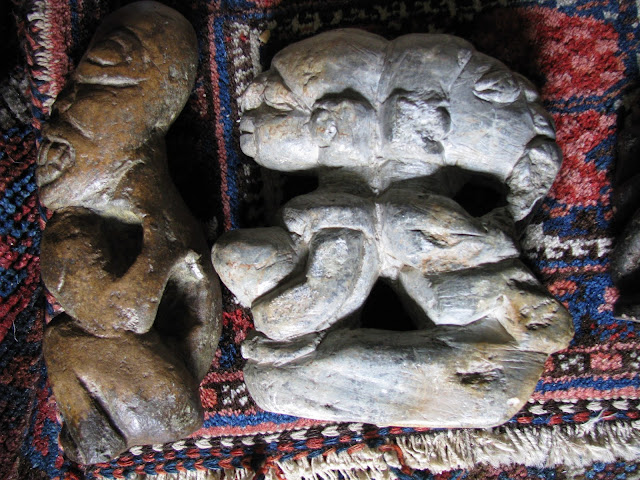



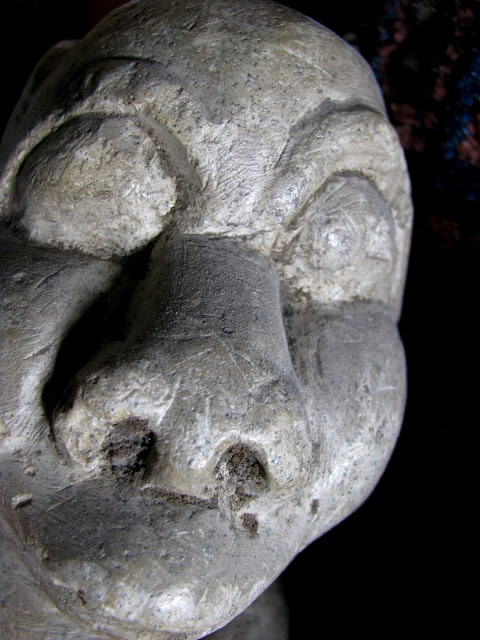
.png)

























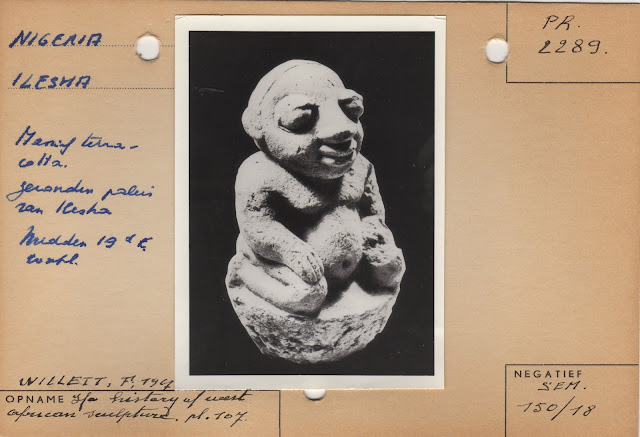



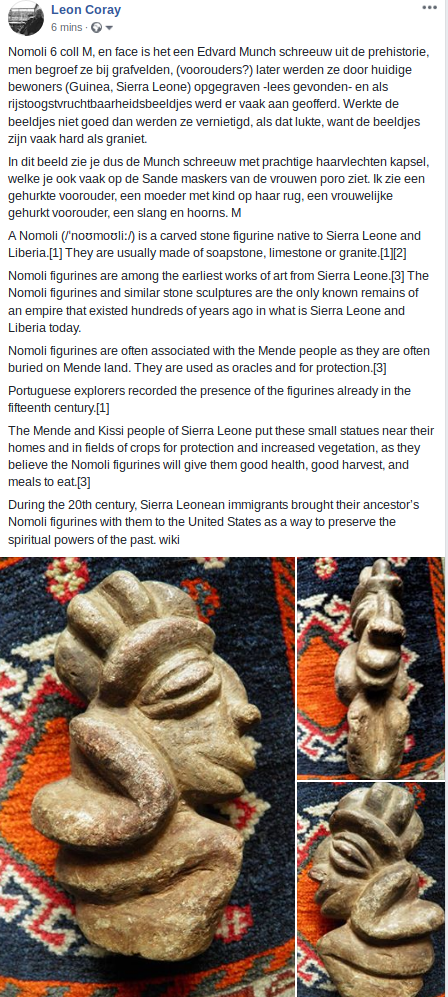















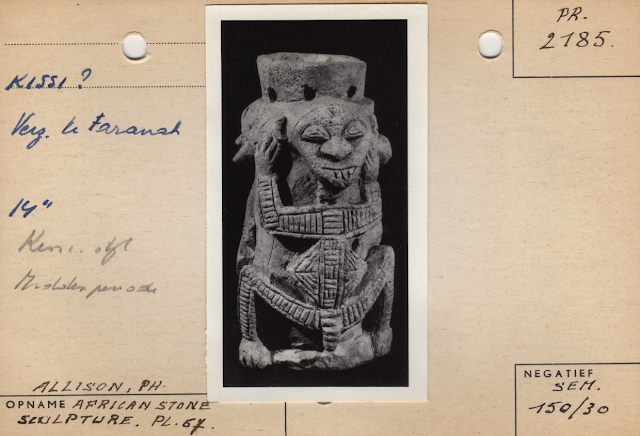









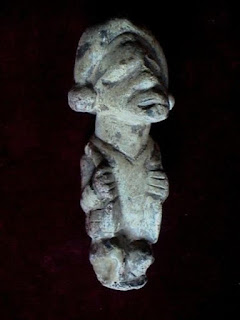






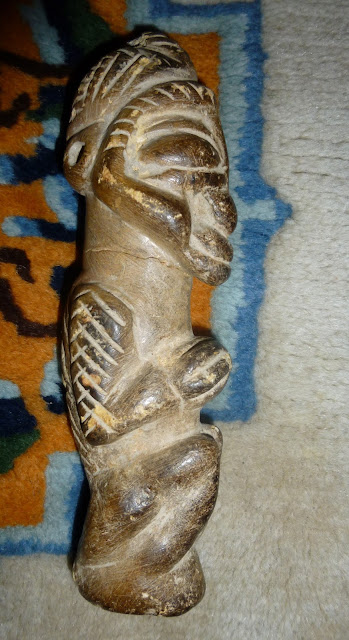
















































.png)





























Geen opmerkingen:
Een reactie posten